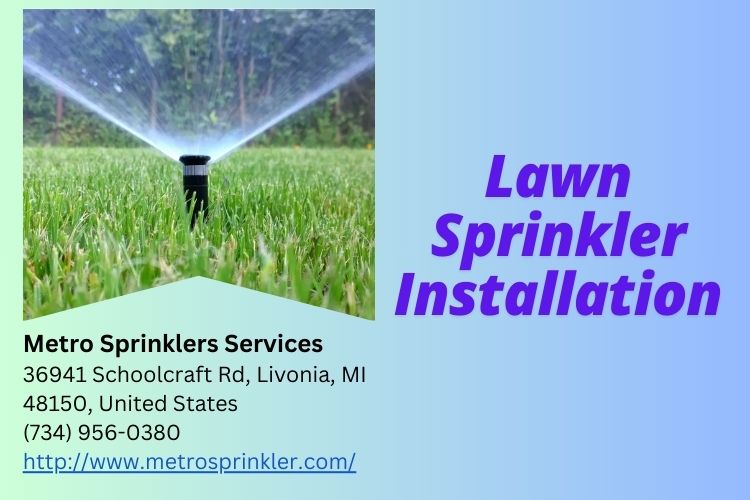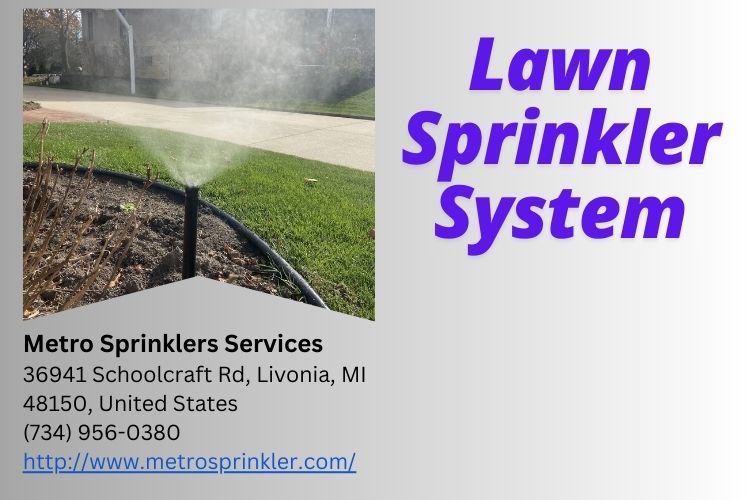Creating and maintaining a lush, green lawn can be an arduous task, especially when it comes to watering. However, with the right lawn sprinkler system in place, you can save time, water, and effort while ensuring your yard looks its best. In this comprehensive guide, we will walk you through every aspect of designing and installing a new lawn sprinkler system. Whether you're a seasoned DIY enthusiast or a first-time home gardener, this step-by-step approach will help you achieve a healthy landscape with ease.
Understanding Lawn Sprinkler Systems
What is a Lawn Sprinkler System?
A lawn sprinkler system is an automated irrigation system designed to deliver water directly to your lawn and garden efficiently. Unlike traditional watering methods that may waste water or require manual labor, these systems use strategically placed sprinklers that can cover large areas evenly.
Benefits of Installing a Lawn Sprinkler System
Investing in a lawn sprinkler installation provides numerous advantages:
- Time-Saving: Automated systems eliminate the need for manual watering. Water Conservation: Advanced technology allows for efficient water usage. Uniform Coverage: Ensures every inch of your landscape receives adequate moisture. Increased Property Value: A well-maintained yard enhances curb appeal.
From Design to Installation: A Step-by-Step Guide to Your New Lawn Sprinkler System
Step 1: Assessing Your Landscape Needs
Before diving into the design process, take stock of your landscape. Consider factors such as:
- Size of the area Types of plants and grass Sunlight exposure Soil quality
Understanding these elements will help you determine the best approach for your new lawn sprinkler system.
Step 2: Choosing the Right Type of System
When it comes to selecting a sprinkler system, there are several options available:
1. Conventional Spray Systems
These systems utilize fixed spray heads that distribute water over short distances. They work best for small to medium-sized lawns.
2. Drip Irrigation
Ideal for flower beds and gardens where targeted watering is essential. Drip systems deliver water slowly Metro Sprinklers Services at the root level.
3. Rotating Nozzles
These nozzles provide superior coverage while using less water than conventional sprays.
4. Smart Irrigation Systems
Integrating weather data with your irrigation schedule can help conserve water significantly.
Step 3: Planning Your Layout
Create a blueprint of your yard including all existing features like trees, bushes, pathways, and patios. This plan will serve as a foundation for determining where each component of your irrigation system should be placed.
Components of a Lawn Sprinkler System
Main Components Explained
To effectively install your new lawn sprinkler system, you'll need to understand its key components:
1. Water Source
The main supply can be from municipal sources or wells; make sure it's sufficient for your needs.
2. Control Valve
These devices regulate water flow based on timers or sensors.

3. Pipes
PVC pipes are commonly used due to their durability and resistance to corrosion.
4. Sprinkler Heads
Different types suit various applications—from pop-up heads for lawns to drip emitters for gardens.
Creating Zones in Your Yard
Dividing your landscape into zones allows different areas to receive varying amounts of water according to their specific needs:
| Zone | Area Type | Water Requirement | |------|----------------|-------------------| | 1 | Full Sun Lawns | High | | 2 | Shade Lawns | Medium | | 3 | Flower Beds | Low |
Designing Your System
Choosing the Right Sprinkler Head Configuration
Selecting the right configuration affects how efficiently each zone is watered:
- Use pop-up heads in turf areas. Opt for drip lines in flower beds.
Calculating Water Pressure Requirements
Understanding your local water pressure helps determine how many zones you can run simultaneously without losing efficiency.
Lawn Sprinkler Installation Process
Step 4: Gathering Tools and Materials
You'll need various tools for successful installation:
- Shovels Pipe cutters Teflon tape Drill with bits
Make sure you have all necessary materials before starting!
Step 5: Marking Out Your Layout
Use flags or spray paint to outline where each component will go according to your design plan—this helps visualize placement before digging begins.
Step 6: Digging Trenches for Pipes
Trenches should be deep enough (about 6 inches) but also wide enough (12 inches) for easy pipe installation.
Installing Each Component Securely
Step 7: Laying Down Pipes and Valves
Connect pipes securely using fittings; ensure they are watertight by applying Teflon tape where needed.

Step 8: Installing Sprinkler Heads Properly
Position heads so they are flush with ground level; adjust them according to their specific type (e.g., pop-ups).
Connecting Everything Together
Step 9: Connecting Control Systems and Timers
Install timers or smart controllers that allow automation based on time or moisture levels—this feature greatly enhances efficiency!
Testing Water Flow
Once everything is connected, conduct tests on each zone before covering trenches—look out for leaks or weak spots!
FAQs About Lawn Sprinkler Systems
How much does it cost to install a lawn sprinkler system?- Costs vary widely based on factors like size and complexity but generally range between $2,000-$4,000.
- Absolutely! With proper planning and tools outlined in this guide, DIY installation is feasible.
- It usually depends on climate; typically once or twice weekly suffices during dry periods but monitor soil moisture regularly!
- Regular checks on functionality during different seasons ensure optimal performance; flush systems annually too!
- Yes! They save both time & resources by adjusting schedules based on actual weather conditions rather than guesswork alone!
- If you're unsure about any steps involving plumbing or electrical work—consult an irrigation installer for peace-of-mind assistance!
Conclusion
In conclusion, embarking on the journey from design to installation of your new lawn sprinkler system doesn't have to feel overwhelming! By following our systematic approach outlined above—assessing needs through planning layouts—you'll find success creating an automated oasis right at home! With proper care & maintenance after installation; enjoy flourishing greenery year-round without breaking sweat over tedious hand-watering routines again! Remember—the key is preparation combined with informed choices throughout each stage while leveraging available resources like trusted irrigation installers if required along way too! Happy gardening!
Contact Us
Metro Sprinklers Services
Address: 36941 Schoolcraft Rd, Livonia, MI 48150, United States
Phone number: (734) 956-0380
Website: metrosprinkler.com